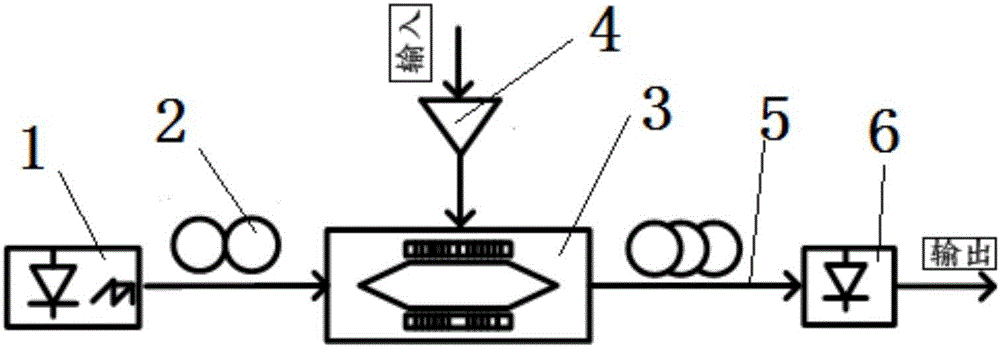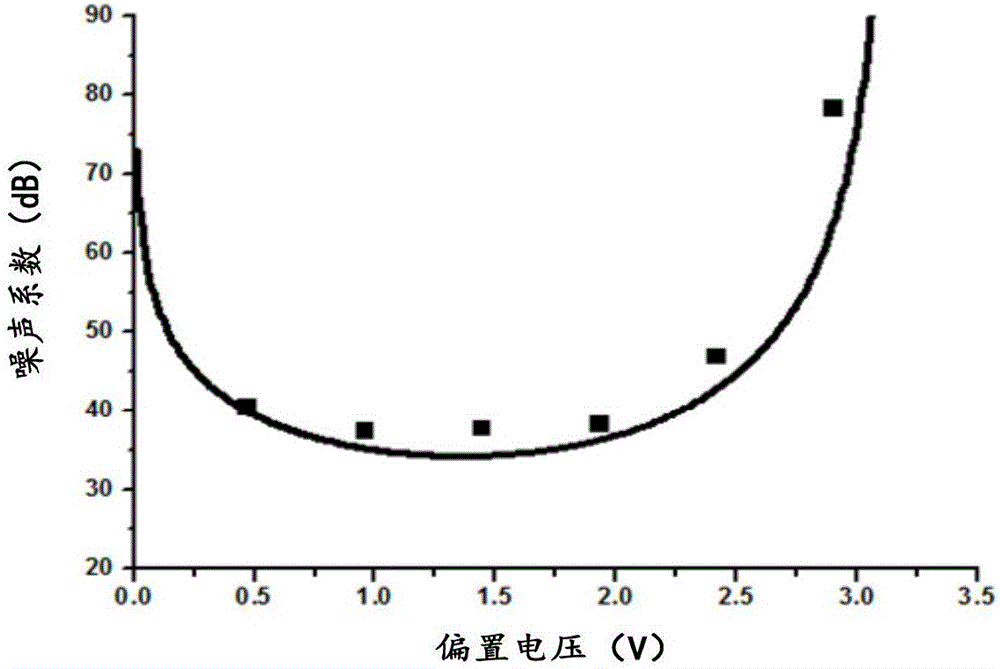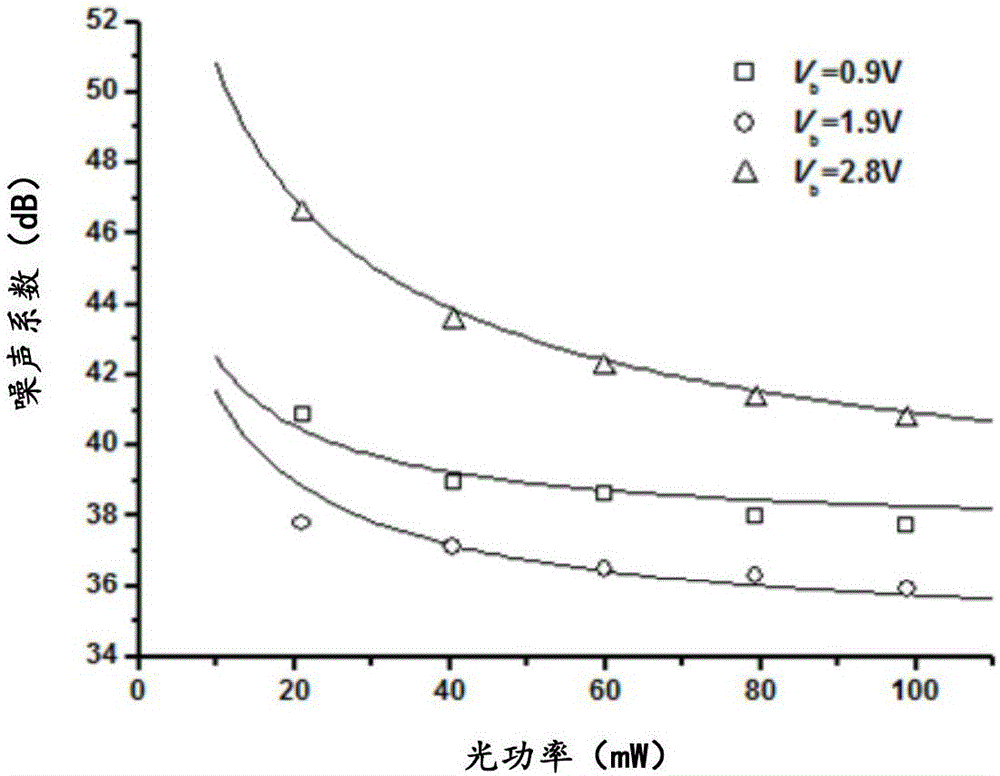Method and device for reducing noise coefficient of analog optical fiber link
A noise figure and analog optical fiber technology, applied in the field of optoelectronics, can solve problems such as increased insertion loss, achieve the effect of reducing link noise figure and breaking through technical bottlenecks
- Summary
- Abstract
- Description
- Claims
- Application Information
AI Technical Summary
Problems solved by technology
Method used
Image
Examples
Embodiment 1
[0033] refer to figure 1 , showing the basic structure of a commercial analog fiber optic link. The link mainly includes a laser 1, which provides a modulated light source; a polarization controller 2, which is used to control the polarization direction of the laser; an electro-optic modulator 3, which realizes microwave-to-optical conversion; an amplifier 4 (preferably a low-noise amplifier), which uses It is used to amplify the input signal and cascade the optical fiber link (namely the optical fiber 5) to reduce the noise figure of the entire link; a photodetector 6 realizes light-to-microwave conversion. The electrical signal is modulated to the amplitude of the optical carrier by the electro-optic modulator, and then restored to an electrical signal at the output of the photodetector after being transmitted in the optical fiber. For a typical intensity modulation-direct demodulation microwave optical link, its noise figure can be expressed as
[0034] F ...
PUM
 Login to View More
Login to View More Abstract
Description
Claims
Application Information
 Login to View More
Login to View More - R&D
- Intellectual Property
- Life Sciences
- Materials
- Tech Scout
- Unparalleled Data Quality
- Higher Quality Content
- 60% Fewer Hallucinations
Browse by: Latest US Patents, China's latest patents, Technical Efficacy Thesaurus, Application Domain, Technology Topic, Popular Technical Reports.
© 2025 PatSnap. All rights reserved.Legal|Privacy policy|Modern Slavery Act Transparency Statement|Sitemap|About US| Contact US: help@patsnap.com



